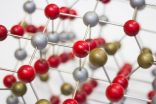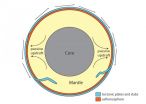(Press-News.org) In a new study, published in Science, researchers at Uppsala University demonstrate an association between smoking and loss of the Y chromosome in blood cells. The researchers have previously shown that loss of the Y chromosome is linked to cancer. Since only men have the Y chromosome, these results might explain why smoking is a greater risk factor for cancer among men and, in the broader perspective, also why men in general have a shorter life expectancy.
Smoking is a risk factor for various diseases, not only lung cancer. Epidemiological data show that male smokers have a greater risk of developing cancer outside the respiratory tract than female smokers. In the present study, which is the result of an international collaboration, the researchers discovered an association between smoking and genetic damage among men that might explain this sex difference.
'We have previously in 2014 demonstrated an association between loss of the Y chromosome in blood and greater risk for cancer. We now tested if there were any lifestyle- or clinical factors that could be linked to loss of the Y chromosome. Out of a large number of factors that were studied, such as age, blood pressure, diabetes, alcohol intake and smoking, we found that loss of the Y chromosome in a fraction of the blood cells was more common in smokers than in non-smokers', says Lars Forsberg, researcher at the Department of Immunology, Genetics and Pathology, Uppsala University, and responsible for the study.
The association between smoking and loss of the Y chromosome was dose dependent, i.e. loss of the Y chromosome was more common in heavy smokers compared to moderate smokers. In addition, the association was only valid for men who were current smokers. Men who had been smoking previously, but quit, showed the same frequency of cells with loss of the Y chromosome, as men who had never smoked.
'These results indicate that smoking can cause loss of the Y chromosome and that this process might be reversible. We found that the frequency of cells with loss of the Y chromosome was not different among ex-smokers compared to men who had never smoked. This discovery could be very persuasive for motivating smokers to quit', says Lars Forsberg.
How loss of the Y chromosome in blood cells, induced by smoking, is connected with the development of cancer throughout the body is still not clear. One possibility is that immune cells in blood, that have lost their Y chromosome, have a reduced capacity to fight cancer cells.
'In summary, we have shown that there is a correlation between a common and avoidable risk factor, that is smoking, and the most common human mutation, loss of the Y chromosome. This finding may in part explain why men in general have a shorter life span than women, and why smoking is more dangerous for men', says Jan Dumanski, professor at the same department of Uppsala University, who has had a leading role in the study.
INFORMATION:
The study is a collaboration between researchers at Uppsala University, Södertörn University, Karolinska Institutet, the University of Oxford, Broad Institute of MIT and Harvard University, the University of Liverpool, New York University and Stockholm School of Economics. The results have been published on-line in Science Express.
For more information please contact:
Lars Forsberg; lars.forsberg@igp.uu.se, office: +46 18 471 4839,
cell phone: +46 70 740 1775
Jan Dumanski; jan.dumanski@igp.uu.se, office: +46 18 471 5035,
cell phone: +46 70 4250616
Article:
Smoking Is Associated with Mosaic Loss of Chromosome Y. Jan Dumanski et al., Science Dec 4 2014
Previously this year the same investigators published an association between loss of the Y chromosome and mortality as well as risk for cancer in men in Nature Genetics. See previous press release: http://www.uu.se/en/media/press-release-document/?id=2297&area=3,8&typ=pm&na=&lang=en
Link to the Nature Genetics article: http://www.nature.com/ng/journal/v46/n6/full/ng.2966.html
The researchers above are affiliated to Science for Life Laboratory (SciLifeLab). SciLifeLab is a Swedish national centre for molecular biosciences with the focus on health and environmental research. The centre combines advanced technical know-how and state-of-the art equipment with a broad knowledge of translational medicine and molecular bioscience.
Cholera is caused when the bacterium Vibrio cholerae infects the small intestine, resulting in severe diarrhea and vomiting, which can result in dehydration and death. The main treatment involves oral rehydration therapy, where the patient drinks water mixed with salts and glucose. But although proven to be enormously effective, there are concerns that the glucose content might actually worsen the disease. EPFL scientists have now shown that this is indeed the case, as glucose increases the toxicity of the cholera bacterium, whereas replacing glucose with starch can reduce ...
A public summer jobs program for high school students from disadvantaged neighborhoods in Chicago reduced violent crime arrests by 43 percent over a 16-month period, according to a new study from the University of Chicago Crime Lab and the University of Pennsylvania. The randomized controlled trial is published in the journal Science.
This research comes as youth employment in the summer months, when teenagers are most likely to work, is near a 60-year low. The challenges facing minority and low-income youth are particularly stark; the 2010 employment rate for low-income ...
Magnetite (or Fe3O4) is an elaborate kind of rust - a regular lattice of oxygen and iron atoms. But this material plays an increasingly important role as a catalyst, in electronic devices and in medical applications.
Scientists at the Vienna University of Technology have now shown that the atomic structure of the magnetite surface, which everybody had assumed to be well-established, has in fact been wrong all along. The properties of magnetite are governed by missing iron atoms in the sub-surface layer. "It turns out that the surface of Fe3O4 is not Fe3O4 at all, but ...
Highly expressed in the testis, a gene named Ranbp9 has been found to play a critical role in male fertility by controlling the correct expression of thousands of genes required for successful sperm production. A group of researchers led by Professor Wei Yan, at the University of Nevada School of Medicine has discovered that a loss of function of Ranbp9 leads to severely reduced male fertility due to disruptions in sperm development. A paper reporting this finding was published in PLOS Genetics on December 4, 2014.
Male infertility affects 1 out of 20 men of reproductive ...
A genetic variant which causes smokers to smoke more heavily has been shown to be associated with increased body mass index (BMI) - but only in those who have never smoked, according to new research led by the University of Bristol, UK and published today in PLOS Genetics.
It is likely that this finding has not come to light before because it has been masked by the effect of smoking, which acts to reduce BMI.
Professor Marcus Munafo from Bristol's School of Experimental Psychology and colleagues studied a variant in the CHRNA5-A3-B4 gene cluster which is known to increase ...
Researchers from the Medical Research Council Lifecourse Epidemiology Unit (MRC LEU), University of Southampton have shed new light on how grip strength changes across the lifespan. Previous work has shown that people with weaker grip strength in midlife and early old age are more likely to develop problems, such as loss of independence and to have shorter life expectancy. However, there is little information on what might be considered a normal grip strength at different ages.
This latest research, which combined information from 12 British studies and is published in ...
An international team, including scientists from DESY, has caught a light sensitive biomolecule at work with an X-ray laser. The study proves that X-ray lasers can capture the fast dynamics of biomolecules in ultra slow-motion, as the scientists led by Prof. Marius Schmidt from the University of Wisconsin-Milwaukee write in the journal Science. "Our study paves the way for movies from the nano world with atomic spatial resolution and ultrafast temporal resolution", says Schmidt.
The researchers used the photoactive yellow protein (PYP) as a model system. PYP is a receptor ...
The temperature of the seawater around Antarctica is rising according to new research from the University of East Anglia.
New research published today in the journal Science shows how shallow shelf seas of West Antarctica have warmed over the last 50 years.
The international research team say that this has accelerated the melting and sliding of glaciers in the area, and that there is no indication that this trend will reverse.
It also reveals that other Antarctic areas, which have not yet started to melt, could experience melting for the first time with consequences ...
CORVALLIS, Ore. - Scientists may have solved a long-standing enigma known as the African Humid Period - an intense increase in cumulative rainfall in parts of Africa that began after a long dry spell following the end of the last ice age and lasting nearly 10,000 years.
In a new study published this week in Science, an international research team linked the increase in rainfall in two regions of Africa thousands of years ago to an increase in greenhouse gas concentrations. The study was funded by the National Science Foundation and the U.S. Department of Energy.
The ...
A long-held assumption about the Earth is discussed in today's edition of Science, as Don L. Anderson, an emeritus professor with the Seismological Laboratory of the California Institute of Technology, and Scott King, a professor of geophysics in the College of Science at Virginia Tech, look at how a layer beneath the Earth's crust may be responsible for volcanic eruptions.
The discovery challenges conventional thought that volcanoes are caused when plates that make up the planet's crust shift and release heat.
Instead of coming from deep within the interior of the ...

